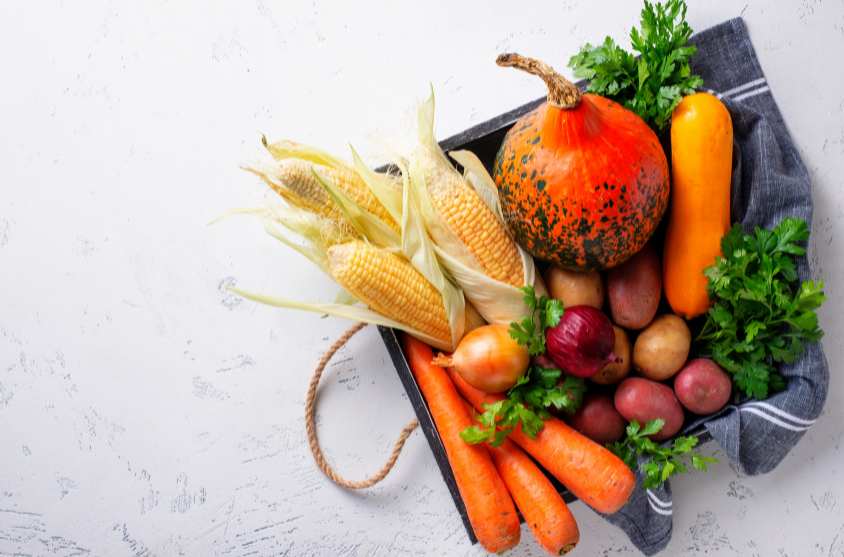
Colorado Guide to Eating Seasonally
A month to month guide of what’s in season in our bountiful state.
I was at the farmer’s market this week and started thinking about putting together a Colorado guide to eating seasonally. After some investigation, here’s what I’ve come up with.
The Colorado Growing Season
Colorado fruits and veggies mainly grow from May through October, with the most robust months being July and August. Here is what actually grows in Colorado during our growing season and a flavorful Colorado guide to eating seasonally.
What’s in Season: A Month by Month Guide
May: Asparagus & Rhubarb
June: Cherries, Lettuces & Strawberries
July: Apricot, Beets, Broccoli, Cabbage, Celery, Cucumber, Green beans, Corn & Tomato
August: Bell pepper, Cantaloupe, Cauliflower, Chili peppers, Eggplant, Honeydew, Onions, Peaches, Plums, Raspberries & Squash
September: Grapes, Pears, Pumpkin & Watermelon
WHY EAT LOCAL?
The actual research on the WHY behind eating seasonally and locally is quite scarce, but I did find a great article by Kathleen Frith, published in the Harvard T.H. Chan’s School of Public Health. Frith lays out, in detail, HOW & WHY our local food is more nutritious. Frith found there are important reasons to eat seasonally & locally, so that you’re eating the most nutritious food possible. Her reasons include: 1) Local food maybe produced differently & with more variety. 2) Local impacts how & when it is picked. 3) Local impacts how it is handled, processed and packaged which helps to determine food’s nutrient density. If food is grown closer to home, on smaller environmentally friendly farms, it is more likely to be produced, picked and handled properly and provides the best nutrition.
Nutrient Density
According to Frith, “Farmers producing for a local and direct market (farmers’ market, community supported agriculture (CSA) members, or a local restaurant or grocer, for example), are more likely to prioritize taste and nutritional quality over durability when making varietal decisions.”
You are more likely to eat an increased amount of vitamins, minerals and antioxidants if you eat locally because farmers choose a greater variety of veggies instead of choosing for greatest yield.
Increased Vitamin Content
Frith found that “Total vitamin C content of red peppers, tomatoes, apricots, peaches and papayas has been shown to be higher when these crops are picked ripe from the plant which, in the case of tomatoes, is attributable to increased sun exposure while attached to the mother plant. While the vitamin C content of tomatoes, for example, will increase to some degree after picking, it will not reach levels found in those allowed to vine ripen.”
Fruits and veggies that stay on the vine longer, will have increased nutrient content.
Post-Harvest Handling Impacts Nutrient Quality
Frith found that “Careful handling preserves plant integrity and quality and careless handling chemically alters plant structure, often diminishing nutritional quality.” Further, “Bruising from handling is one of the most common problems. Mechanical harvesting methods like those used in mass production have the potential to be most damaging and can result in accelerated nutrient losses.”
Large farm handling and bruising in particular, negatively impacts nutrient quality of fruits and veggies.
For more info on eating with the seasons and finding your personalized nutrition plan, connect with a holistic nutritionist for a complimentary consultation.
